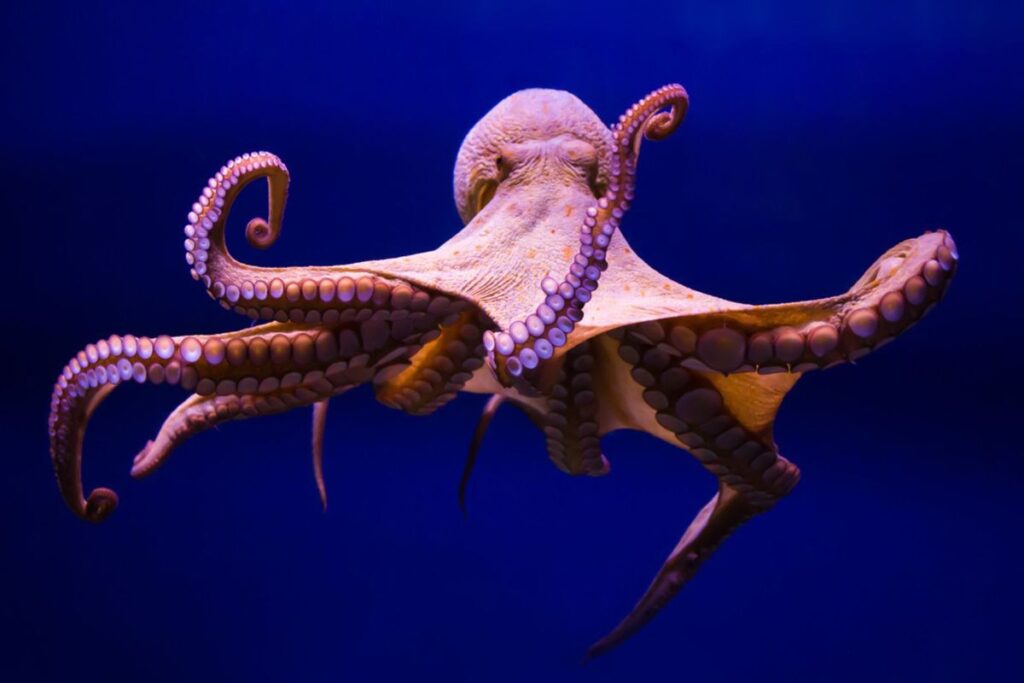Soft-bodied creatures, such as animals and humans, have long fascinated researchers seeking inspiration for robotics with their remarkable ability to navigate and manipulate their surroundings. Consequently, has been a rapidly developing field, with researchers coming up with innovations and improvements quite often. A group of scientists from Beihang University a new octopus-inspired robotic arm that promises unparalleled flexibility and deformability in sensing and manipulating objects, both in confined spaces and underwater.
The Electronic Soft Octopus Arm, or E-SOAM, draws inspiration from the characteristic “bend propagation” motion of octopus arms. The team implemented a bending-elongation propagation model to mimic the reaching, sensing, and grasping capabilities of octopuses. The E-SOAM boasts a stretchable, liquid-metal-based electronic circuit that enables it to perform tasks autonomously in a highly deformable state.
Bridging the human-machine gap The researchers integrated a finger glove as a control interface, adding a human touch to the E-SOAM, which allows operators to guide the robot through touch-based feedback. Individuals can use the glove and remotely control the robot’s in-plane and out-of-plane movements, demonstrating the potential for a fully wireless and untethered human-machine wearable interface in the future. The glove not only captures the operator’s finger movements but also provides haptic feedback, creating a bidirectional interaction that mimics the nuanced communication seen in living beings.
At the heart of E-SOAM is a stretchable electronics-integrated design featuring 16 pneumatic actuators and multiple degrees of freedom. Beyond its marvelous mechanical capabilities, the robotic arm is also capable of detecting objects’ temperature while at work in air and water. Traditional soft robots often rely on external visual feedback or tethered systems, limiting their range and applications.
In contrast, E-SOAM’s stretchable electronic circuit boasts multiple sensing units, including bending, suction, and temperature sensors, along with an IC processing module and a wireless communication module. An integrated liquid-metal-based electronic circuit enables E-SOAM to operate autonomously in highly deformable states, reaching and grasping much like its biological counterparts it takes inspiration from. Central to the E-SOAM’s design is a scalable six-segment body that draws inspiration from the kinematic control strategy of an octopus, the secret to it outperforming other scalable robots whose control difficulties increase with the number of segments.
The way forward Despite its achievements, the researchers acknowledge current limitations. The liquid metal sensing/processing network is currently integrated only into the distal terminal gripper, limiting the sensing and manipulating area to the gripper when compared to the . The haptic feedback applied to the human finger also requires an additional vacuum supply, restricting the movement of the human operator.
The team envisions expanding the sensing/processing network and adopting advanced technologies, such as wearable fluidic pumps or vibration systems, to achieve a fully wireless and untethered human-machine wearable interface. Looking ahead, the researchers aim to explore the full potential of E-SOAM, acknowledging that the arm’s redundant degrees of freedom make it capable of performing more varied, complex octopus-like movements. Their goal is to enhance the system’s capabilities and further bridge the gap between soft robotics and human-machine interaction.
The team’s findings were published in the journal . Octopuses can whip their soft arms with a characteristic “bend propagation” motion to capture prey with sensitive suckers. This relatively simple strategy provides models for robotic grasping, controllable with a small number of inputs, and a highly deformable arm with sensing capabilities.
Here, we implemented an electronics-integrated soft robotic octopus arm (E-SOAM) capable of reaching, sensing, grasping, and interacting in a large domain. On the basis of the biological bend propagation of octopuses, E-SOAM uses a bending-elongation propagation model to move, reach, and grasp in a simple but efficient way. E-SOAM’s distal part plays the role of a gripper and can process bending, suction, and temperature sensory information under highly deformed working states by integrating a stretchable, liquid-metal–based electronic circuit that can withstand uniaxial stretching of 710% and biaxial stretching of 270% to autonomously perform tasks in a confined environment.
By combining this sensorized distal part with a soft arm, the E-SOAM can perform a reaching-grasping-withdrawing motion across range up to 1. 5 times its original arm length, similar to the biological counterpart. Through a wearable finger glove that produces suction sensations, a human can use just one finger to remotely and interactively control the robot’s in-plane and out-of- plane reaching and grasping both in air and underwater.
E-SOAM’s results not only contribute to our understanding of the function of the motion of an octopus arm but also provide design insights into creating stretchable electronics-integrated bioinspired autonomous systems that can interact with humans and their environments. .
From: interestingengineering
URL: https://interestingengineering.com/science/research-devised-a-new-soft-robotic-arm-mimicking-octopus-tentacles
